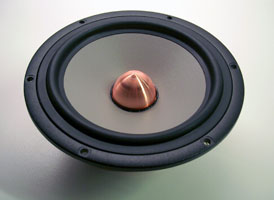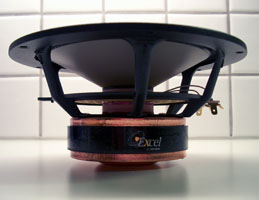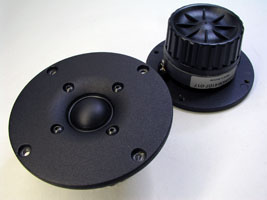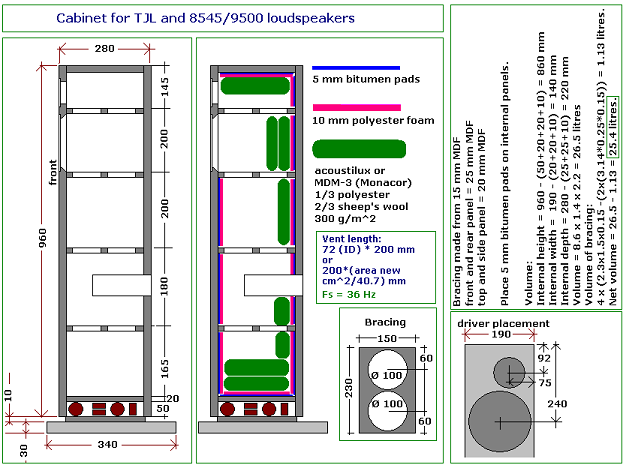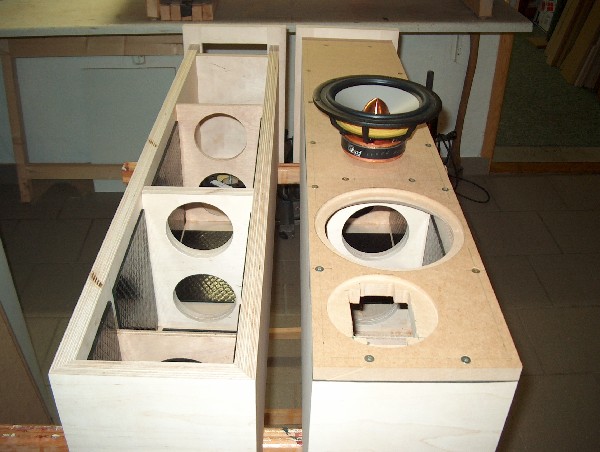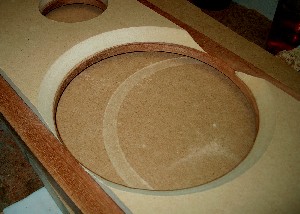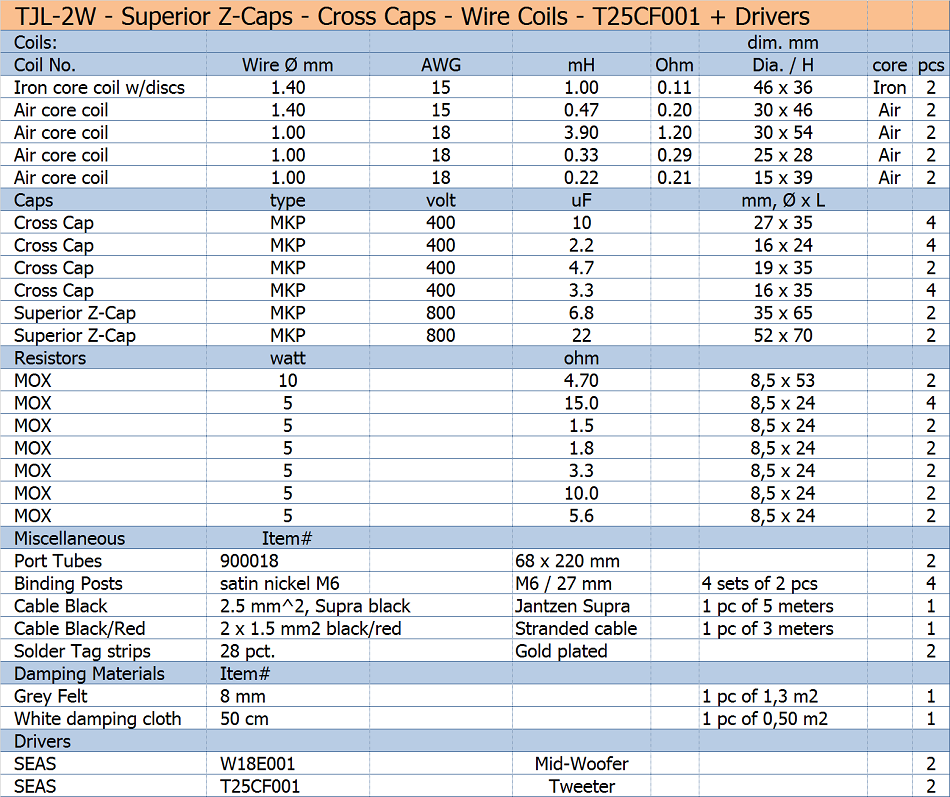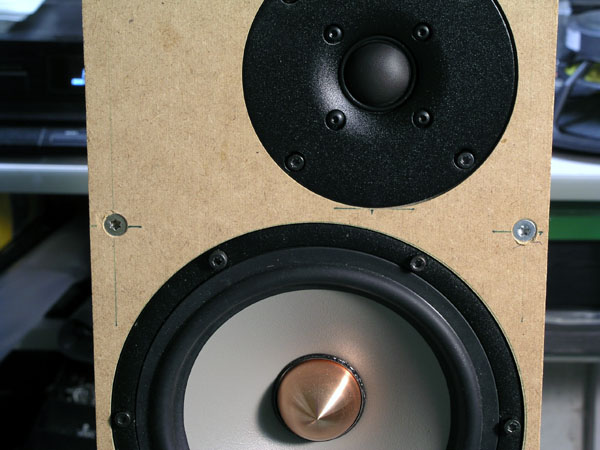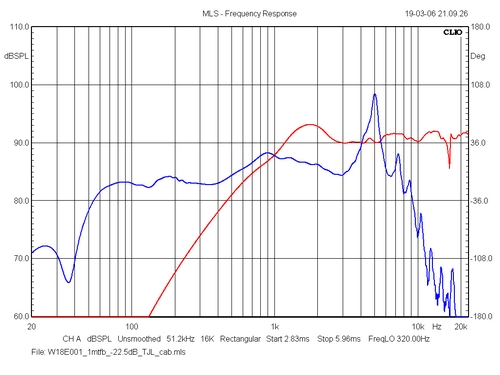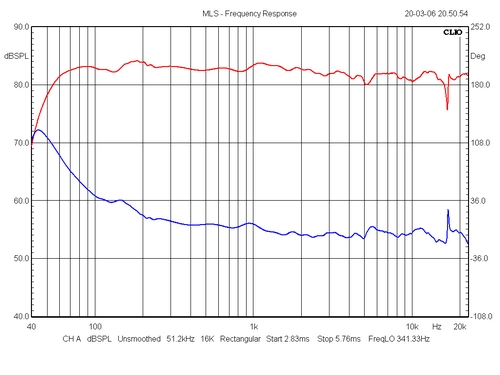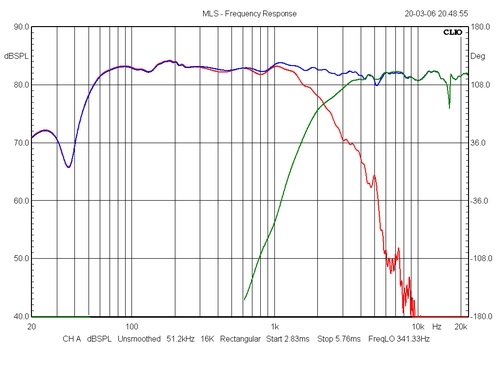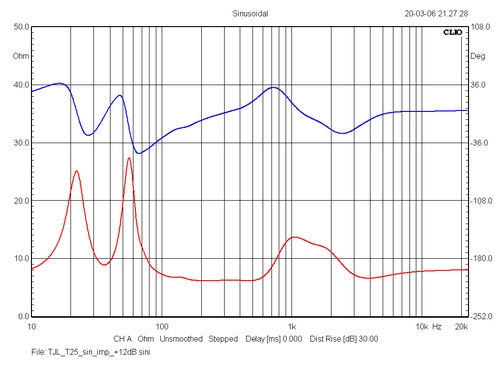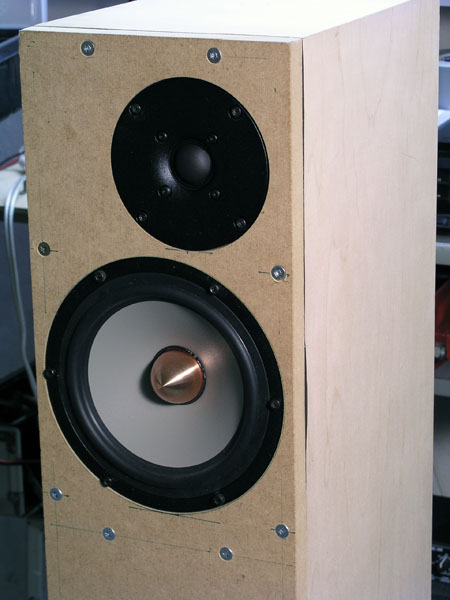|
TJL-2W
Open kit, not supported by Jantzen Audio. Go To:
W18E001 T25CF0001 The following project describes a 2-way floorstander of modest dimensions: 19 x 98 x 26 cm (W x H x D). As a follow-up to the 2.5 clone this project is targeting a better midrange, better treble, bass comparable to the 2.5 clone and a more moderate sized cabinet. Well, can all these requirements be accomplished in a smaller size construction? And from what drivers? From the Point75 and Acapella projects the use of the SEAS W18 drivers seemed an obvious choice for a 2-way floorstander. And from the bass performance of the Point75 a smaller cabinet might provide similar or better qualities compared to the 2.5 clone. But you can never tell the bass quality until you've tried. What I also wanted to try in this construction was the use of a passive radiator and SEAS provides suitable PRs for 6" drivers. This PR proved to be a major disappointment, but more on this later. Getting more bass out of
a SEAS W18 design, the magnet obviously has to be smaller
- or the cone must be heavier - compared to the W18EX001
driver used in the Acapella, hence the W18E001 was the
one to look for. This driver has TS data suggesting a
24-litre cabinet to be suitable for some decent bass and
a port/PR tuning of 34-38 Hz should provide a f3 at 40
Hz. Cabinet
construction:
The prototype cabinets were made from 20 mm Baltic birch with 19 mm MDF front panel. Internal panels were added 4 mm self-adhesive bitumen pads (can be found in car accessory stores). All internal panels were damped with 10 mm polyester foam and behind the W18 driver 2 sheets of 4 x 15 x 20 cm MDM3 (Monacor) were placed. At the top and bottom of the cabinet more of this damping material was placed to reduce standing waves between top and bottom.
Much to often heavy front panels are produced without chamfering like seen on the picture to the right. This seriously prevents the air from having free access to the enclosure behind the driver. Remember, the amount of energy released from the rear of the driver membrane is exactly the same as from the front. Don't forget to chamfer the driver holes 45 deg. as seen on the picture to the left.
Left: SPL from individual drivers without crossover attached. As can be seen, the response from the W18 is reasonably linear up to 400-500 Hz, then climbing some 5-6 dB up to 1 kHz. Last but not least, the horrific cone break-ups peaking at 5 kHz that has to be carefully suppressed by the notch filter. The T25 has a minor bump at 1700 Hz, but nothing that causes trouble in making the crossover work. Summed response (red) with near-field bass response from 350 Hz. Now this is some smooth linear response and the sonic impact from this is not to be ignored. Blue = minimum phase.
Left: SPL from drivers with crossover attached. As can be seen the cone break-up from the W18 is thoroughly suppressed. Point of crossover is around 2300 Hz. (sorry for merging the tweeter also! Doesn't do much below 600 Hz) Right: Impedance profile of TJL-T25. This is a relatively easy load on your amplifier.
|
